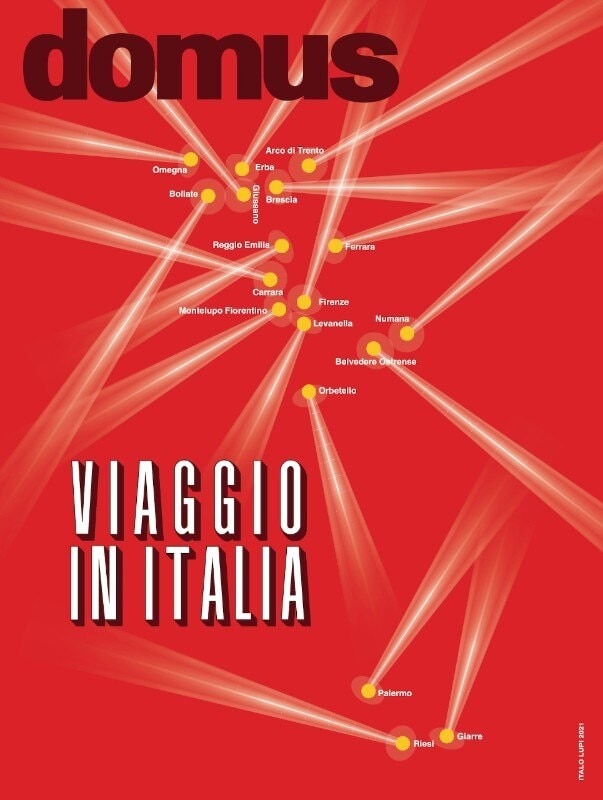Domus continues its journey through Italy, and this time Sicily is our starting point. Palermo (a former capital), Riesi (a small town with ancient origins) and Giarre (an agricultural testing ground at the cutting edge of reconciliation with nature) are the first chapters in a wide-ranging story that outlines ideas for urban and territorial regeneration. This account shows how smart choices and virtuous processes are always guided by a commitment to shaping utopia, no matter what the scale.
We are accompanied on this voyage by the new landscapists of the 21st century: photographers who, with their distinctive sensibility, compose an atlas of the environmental mosaic, the setting of our everyday lives, with a focus at times of piercing reality, rescuing us from our habitual distracted gaze.
There are plenty of surprises along the way, after a period of mortification and scarcity.
After the trauma of pandemic and the dystopia of lockdown, physical places have returned to the fore as the scenes of community life. They include the big cities, but above all the extraordinary world of Italy’s provinces. These areas are kick-starting the country thanks to the active continuation of traditions that prove to be fields of expertise, making Italy attractive and vibrant with the strength of differences (an extraordinary means to resist standardisation), working from below to nurture cultural and productive chains in the form of networks.
Ours is a journey in search of spaces – not only enclosed ones, but also streets, squares, parks and courtyards – that have opened up to cultural production, leisure and the most varied forms of work, exorcising the paradigm of the fear of contact, the wariness of bodies and anxiety of closeness. Art has rediscovered that it can play a leading role in this exorcism, revealing the nature of places and projecting it into the future to dispel the idea of an Italy crushed by the weight of its past. Cities of art, monuments, churches and museums are embracing new prospects that enhance the splendour of time, reinvesting it in the creation of heritage.
Works by artists inside and outside the usually appointed settings are marking a revival of urban art and the emergence of an innovative outlook that views the heritage of the past as a treasure to consume in everyday life.
Physical places have returned to the fore as the scenes of community life.
There are plenty of surprises along the way, after a period of mortification and scarcity. For example, there are company museums that become public showcases explaining the creative transition between industry and culture; factories addressing the landscape as a resource and not a limitation; businesses reinventing themselves as community experiments, fostering innovation in regions that are giving fresh impetus to the economy, but above all progressive forms of balance between nature and culture.
New models are thus emerging to interpret and govern the necessary metamorphosis, regardless of the scale of the proposals. Indeed, in a vision of participatory democracy, there is a proliferation of subjects capable of driving change. Small self-managed associations, historic institutions, prestigious industrial groups and religious bodies are showing a willingness to experiment with languages that speak not just to their faithfuls. They attest to the need for beauty, meaning the importance for ethics to be represented in aesthetics.



